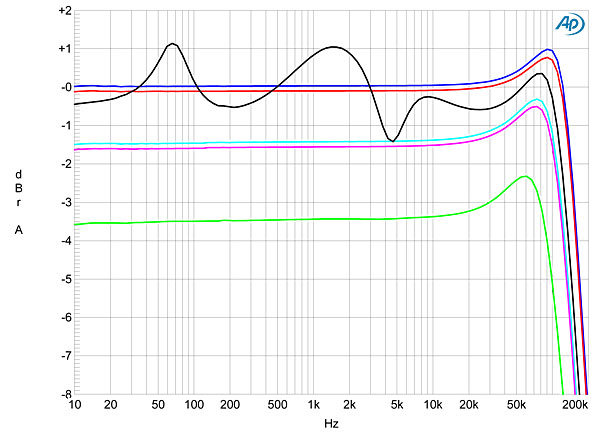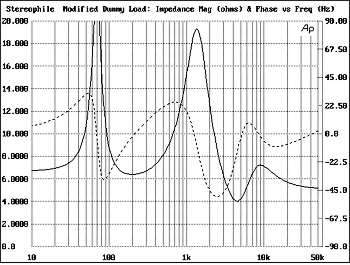You are using an out of date browser. It may not display this or other websites correctly.
You should upgrade or use an alternative browser.
You should upgrade or use an alternative browser.
Croft Line Integrated
- Thread starter Shane2468
- Start date
I'm on my second one, have also lived with the separates (25R and 7R) for a few years. The integrated is totally brilliant for the money and I would always have one in the house. Ballsy enough to drive ATC 11's and even 19's and no trace of hardness unlike the current Musical Fidelity stuff. I listen mostly to valve amps and slotting in the Croft I noticed it to be a tad leaner but in no way hard, still very close to neutral. More lifelike than the modestly priced NAD and Emotiva offerings, most similar competitor the Rega Elex-R which is nice and I could easily live with, has more grunt if you need it. Hope this helps.
Shane2468
pfm Member
I'm on my second one, have also lived with the separates (25R and 7R) for a few years. The integrated is totally brilliant for the money and I would always have one in the house. Ballsy enough to drive ATC 11's and even 19's and no trace of hardness unlike the current Musical Fidelity stuff. I listen mostly to valve amps and slotting in the Croft I noticed it to be a tad leaner but in no way hard, still very close to neutral. More lifelike than the modestly priced NAD and Emotiva offerings, most similar competitor the Rega Elex-R which is nice and I could easily live with, has more grunt if you need it. Hope this helps.
Thanks.
S.
tuga
Legal Alien
The version without the phono stage. Any good? What is the sound character like?
Cheers.
S.
What speakers do you intend to use them with?
They're rather picky...
Shane2468
pfm Member
What speakers do you intend to use them with?
They're rather picky...
I don't know if I will buy the Croft or not. You say ''rather picky'' - are you speaking from experience or online reports?
S.
tuga
Legal Alien
I don't know if I will buy the Croft or not. You say ''rather picky'' - are you speaking from experience or online reports?
S.
I am speaking from reading the measured output impedance which is on the massive side of high:
https://www.stereophile.com/content...-integrated-integrated-amplifier-measurements
Shane2468
pfm Member
I am speaking from reading the measured output impedance which is on the massive side of high:
https://www.stereophile.com/content...-integrated-integrated-amplifier-measurements
I'm a subjectivist. Measurements are meaningless to me, thank you!
S
tuga
Legal Alien
I'm a subjectivist. Measurements are meaningless to me, thank you!
S
Regardless of your religious beliefs, they are picky (it's a fact).
What speakers to you intend to drive with the Croft?
paulfromcamden
Baffled
I am speaking from reading the measured output impedance which is on the massive side of high:
https://www.stereophile.com/content...-integrated-integrated-amplifier-measurements
Hi Tuga - I have a Croft Integrated that I love. I've never had any problems but I'm not sure I've tried it with that many speakers.
What does a high output impedance mean in practice? High frequency roll-off? And what would a speaker have to do to be a good match?
tuga
Legal Alien
Hi Tuga - I have a Croft Integrated that I love. I've never had any problems but I'm not sure I've tried it with that many speakers.
What does a high output impedance mean in practice? High frequency roll-off? And what would a speaker have to do to be a good match?
It means "wooly" bass and a combined frequency response which is greatly affected by the speaker load (unlike with low output impedance amplfiers, the combined amplifier/speaker balance will vary from speaker to speaker).
Such amplifiers are best partnered with easy and balanced load speakers.
It measures like a not too powerful or well engineered tube amp.
Identity crisis?
I would guess any speaker with low self damping may not be 'the best' match but it could be good with smaller transducers or over damped designs.
Strange design but the low key appearance has its own appeal.
Identity crisis?
I would guess any speaker with low self damping may not be 'the best' match but it could be good with smaller transducers or over damped designs.
Strange design but the low key appearance has its own appeal.
paulfromcamden
Baffled
It's a funny one. The Stereophile techies crying over how badly it measures, Art Dudley raving about how good it sounds.
ArtK
Lovin’ life!
I played a variety of speakers with my Croft Phono Integrated. They all sounded great with it.I'm a subjectivist. Measurements are meaningless to me, thank you!
S
daytona600
Registered User
Showing no mercy, I dropped the Croft in place without paying any concern to price or-as above-impedance. The source was the deliriously expensive SME 30 turntable with SME Series V arm and Koetsu Urishi cartridge. In addition to the Wilson's, I also had a go at the hungry Sonus Faber Guarneri and LS3/5A speakers. Wiring throughout was from Transparent. . Croft charges £1000 for this integrated amplifier. and it did not embarrass itself.This amplifier has been taking on bigger, beefier competitors and slaughtering them, a real David versus Goliath scenario - Ken Kessler Hifi News
Seanm
pfm Member
Sounded audibly distorted to me through Harbeth C7s, although very nice in lots of ways. I tried the pre with a Quad 306, with different speakers (Tannoy), and heard similar strengths without the weaknesses. But who knows what the speakers had to do with that.
I should say that lots of people like the Croft integrated/Harbeth combo, so it’s a question of ears as well as speakers.
I should say that lots of people like the Croft integrated/Harbeth combo, so it’s a question of ears as well as speakers.
tuga
Legal Alien
It's a funny one. The Stereophile techies crying over how badly it measures, Art Dudley raving about how good it sounds.
It happens quite often that some people like some types of distortion, which is why they're called euphonic distortion.
Like I said, it's a picky design and care should be taken when selecting the speakers. (I should have added that some people will probably like how it sounds when it's struggling, but we're audiophiles and already know that)
ArtK
Lovin’ life!
Actually it was just John Atkinson complaining about the measurements with Art Dudley, Stephen Mejias and Sam Tellig raving about the sound. Atkinson never listened to it that I am aware of.It's a funny one. The Stereophile techies crying over how badly it measures, Art Dudley raving about how good it sounds.
tuga
Legal Alien
Actually it was just John Atkinson complaining about the measurements with Art Dudley, Stephen Mejias and Sam Tellig raving about the sound. Atkinson never listened to it that I am aware of.
Measurements tell about electrical performance/compatibility, they are factual.
Raving tells about personal preference, it's a matter of personal opinion.
If you look at the frequency response plot you will see that when the amplifier is driving a speaker load the response is all over the place (black trace).
Different speakers will produce a different load, to the all-over-the-place will vary from speaker to speaker.

As you can see, the combined response of the amplifier/speaker closely mimics the speaker load – peaks and dips at the exact same frequencies (below).


